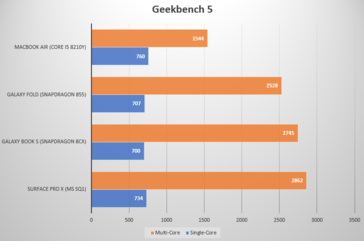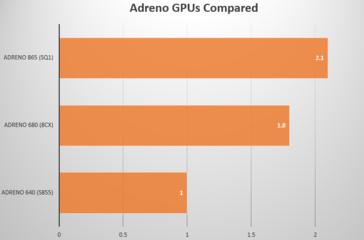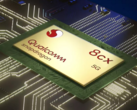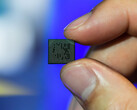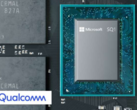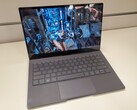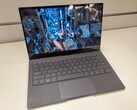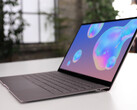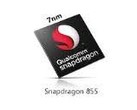The Qualcomm Snapdragon 855 is a custom high-performance smartphone chip built using ARM’s RISC architecture and ARMv8 instruction set and fabricated on a 7 nm FinFet process node. It is a 64-bit that features customized versions of ARM’s Cortex-A76 high-performance cores (Kryo 495 Gold) and its Cortex-A55 power-efficient cores (Kryo 495 Silver). Of the four high-performance Kryo 495 Gold cores, Qualcomm has one ‘Prime’ core clocked at 2.84 GHz and the remaining three clocked at 2.42 GHz. The four Kryo 495 Silver cores are all clocked at 1.8 GHz. As you can see from the chart below, it delivers a single-core performance score in Geekbench 5 of 707 and a multi-core score of 2528. It also features an integrated Adreno 640 GPU good for around 1 teraflop of precision floating point performance.
When compared to the Intel Core i5-8210Y found in the current Apple MacBook Air, you can start to see why Microsoft and Qualcomm have gotten excited about the prospects of Windows 10 on ARM. The Snapdragon 855 forms an excellent basis for running a full-blown PC operating system, which is why Qualcomm has been able to further optimize it for use in PC form factors. Where the Snapdragon 855 is limited by the confined thermal constraints of smartphones and is kept at maximum TDP of 5 W, the increased space found in a laptop or tablet means that there is further headroom to be unlocked from the underlying design.
Enter the Qualcomm Snapdragon 8cx. This is the SoC found in the new Samsung Galaxy Book S and like the Snapdragon 855, it features four Kryo 495 Gold cores and four Kryo 495 Silver cores. The key difference in this implementation, however, is that Qualcomm all four Kryo 495 Gold cores are clocked at 2.84 GHz. Its TDP has also been increased to 7 W. While single-core performance remains the same with a Geekbench 5 score of 700, it results in a significant uplift in multi-core performance with a score of 2745. Moreover, the Adreno 680 ‘Extreme’ integrated GPU gets an even bigger boost turning up the performance dial by 80 percent to deliver 1.8 teraflops of precision floating point performance.
For the Surface Pro X, Microsoft was looking for even more performance and worked with Qualcomm to deliver the SQ1. This custom variant of the Snapdragon 8cx ups the ante with its four high-performance Kryo 495 Gold cores clocked at 3.0 GHz while keeping its TDP at the same 7 W. This sees the SQ1 deliver a single-core score on Geekbench 5 of 734 and a multi-core score of 2862. These are certainly impressive numbers, but Microsoft also wanted more out of the Adreno GPU as well. The Adreno 685 fitted integrated into the SQ1 SoC delivers a whopping 2.1 teraflops of precision floating point performance making it quite exceptional compared to the GEN11 integrated GPUs found in Intel’s 10nm 'Ice Lake' chips and the Nvidia MX150 which are only about half as powerful.
We’ve recently highlighted just how the Galaxy Book S is thinner, lighter and faster than the MacBook Air. Samsung also claims that it lasts nearly twice as long and able to deliver 25 hours of continuous video playback before it runs out of juice. Stay tuned for our head-to-head comparison of the Samsung Galaxy Book S and Surface Pro X and the respective upsides and downsides of the respective approaches Samsung and Microsoft have taken to their Windows 10 on ARM devices.





